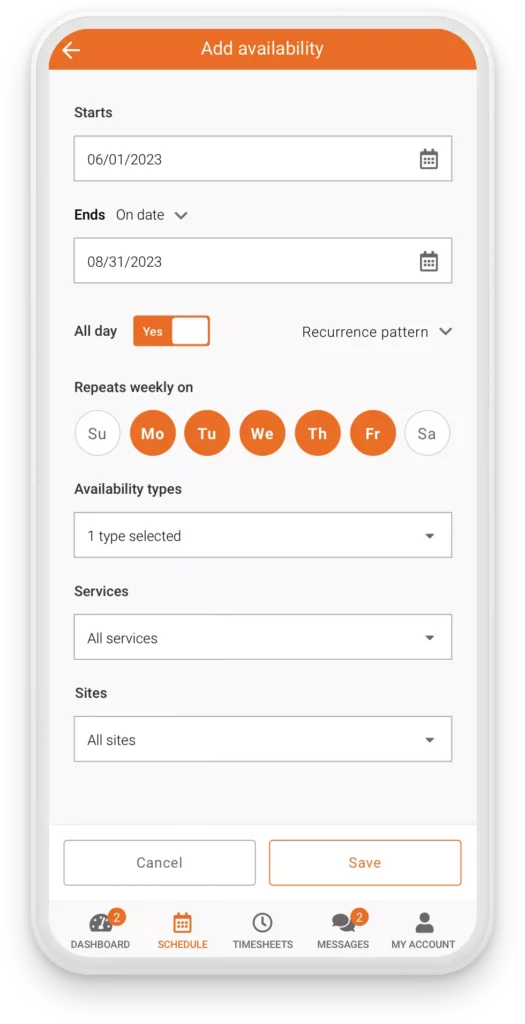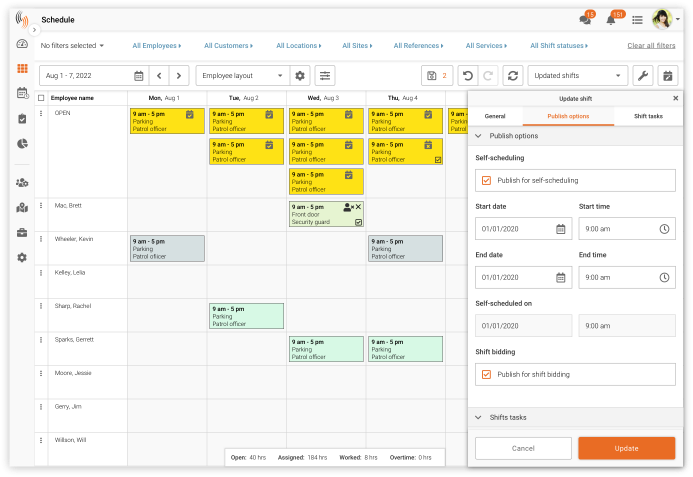A flexible schedule is the number one desire of 66% of all shift workers!
Have you ever considered offering flexible work schedules to your shift workers? Do you understand the impact of shift work on your employees and your business? If you’re considering offering flexible hours to your employees, take a look at why and how you should do that here!
As we all know, the world doesn’t operate on a 9-5 schedule. In reality, a lot of industries and organizations rely on shift work or 24/7 operations to stay in business. If you’ve ever worked shift work, you’ll know that it’s no walk in the park.
You’ll also know that flexible work schedules aren’t very common in shift work. More often than not, shift workers work the same shifts, on a cycle or rotation. Shift workers typically also work longer shifts than the standard 8-hour day.
Most employers understand that shift work can take its toll on their employees. However, they don’t have the knowledge, tools, or resources to provide flexible work schedules. We at Celayix are advocates for workplace flexibility, as we recognize that employee demands and expectations are changing.
In fact, a flexible schedule is the number one desire of 66% of all shift workers! Let’s break down the impact of shift work on employees, and how employers could provide flexible work schedules to employees!

Why Shift Workers need Flexible Work Schedules
Before we take a look at how you can provide flexible work schedules to shift workers, you need to understand why you should bother. While we noted above that shift work has an impact on your employees, it also affects other areas of your business!
HEALTH ISSUES RELATED TO SHIFT WORK
With it, shift work brings a range of both long-term and short-term health issues. Insomnia, cardiovascular disease, diabetes, and obesity just to name a few. While not all of them are extremely common, roughly 62% of all night-shift workers suffer from troubled, inadequate sleep.
There’s actually a recognized illness known as shift work disorder, which affects about 10% of all shift workers in the United States. As most of us know, a lack of sleep or poor quality sleep impacts both our personal and professional lives hugely.
As an employer, it’s in your best interest to provide a healthy work life balance to your employees. Flexible work schedules are a great way to take work and personal time into consideration. This lowers the chance of employee burnout and stress problems that will affect your business and employees in the end.
SAFETY CONCERNS
While it might be related to the above point, and poor sleeping patterns, shift workers generally experience more workplace accidents than standard workers. According to the Occupational Safety and Health Administration (OSHA), accident and injury rates are 18% greater during evening shifts and 30% greater during night shifts when compared to day shifts. Research indicates that the risk of injury increases by 37% with 12-hour shifts. of injury. When we hear these statistics, it’s easy to see how shift work could quickly become a safety concern.
IMPACT ON PRODUCTIVITY & PROFITABILITY

Taking the above points into consideration, we can start to see the financial impact of shift work on companies, when not managed correctly. Without flexible work schedules, fatigue can become a drain on resources.
According to the National Safety Council (NSC), the total cost of productivity loss due to fatigue alone is estimated at around $136 billion per year. And that’s just the cost of fatigue! Other health issues can lead to increased absenteeism or turnover, both of which have negative financial impacts on your company.
Turnover is very costly, with each new hire costing up to 21% of the salary that needs to be replaced. That’s just the direct financial costs, but turnover also leads to loss of company knowledge and impacts morale. Productivity takes a huge hit when turnover is high.
Add absenteeism into the mix and you have a recipe for disaster! According to existing research, absenteeism costs employers between $2,660 & $3,600 per employee every year. With all of this in mind, it becomes clear why shift workers need flexible work schedules!
How to Provide Flexible Work Schedules to Shift Workers
Before we break down how you can introduce flexible work schedules into your organization, it’s important to note that it will look different for everyone. Depending on your industry and workforce, there are many types of flexible work schedules that might work for you.
A lot of companies that manage shift workers already use employee scheduling software to handle their complex scheduling needs. If they aren’t they should be. As we go through the various ways to provide flexible work schedules to shift workers, it is helpful to know that employee scheduling software can streamline the process for both employers, and employees!
EMPLOYEE AVAILABILITY

Perhaps the easiest, and least daunting way that managers can offer flexible work schedules is to allow employees to declare their availability. One of the main reasons shift workers seek flexibility is to achieve work-life balance. Building a work schedule that can provide work-life balance to shift workers becomes much easier when you can see which days employees are free to work. This is a great method to provide some level of autonomy to shift workers over their schedule, without losing total control over it.
SHIFT BIDDING
Another way that managers can provide flexible work schedules to shift workers is through shift bidding. With shift bidding, managers can build the schedule with open shifts, only having to ensure that all shifts have enough coverage etc. Then, they can release the shifts for shift bidding, where employees are free to express interest in working a shift by submitting a bid.
Once the bidding period has ended, managers have the final say on which worker gets assigned to each shift! Shift bidding is hugely popular for shift workers as it provides a great balance of flexibility for employees, and control for employers.
SELF-SCHEDULING
Self-scheduling is the best way to provide total autonomy to employees, which is what a flexible work schedule should achieve. Similar to shift bidding, self-scheduling begins when the scheduler builds the schedule with open shifts, without assigning them to an employee. Then, the shifts are released for self-scheduling, where employees can claim shifts on a first come first served basis! Managers often see the lack of control over the schedule as a downside, but this doesn’t need to be the case.
Shift workers know their own capabilities, working habits, and personal needs best. This means they will likely claim shifts that suit those needs, which will likely result in an increase in productivity. Some workers are night owls by nature, so allowing them to select the shifts that best reflect their own habits will yield the best results!
It is a pretty safe bet to also assume that self-scheduling will improve employee engagement overall, further improving productivity & profitability! It will also reduce the number of workplace accidents, as those who are fatigued will avoid high-risk shifts.

There are other options that employers can look into such as shift swapping, or hybrid schedule models that adopt all of the above methods. Involving employees in the scheduling process in any way can have benefits. Managers are often hesitant to introduce flexible work schedules as they worry about the lack of control.
However, as you can see, these fears can be controlled when you provide flexibility in the right way. Shift workers deserve flexibility, and they are starting to realize it. Don’t fall behind or lose your top talent because you can’t provide it for them! If you’d like to see how Celayix can help you provide flexible work schedules to your employees, get in touch today!




